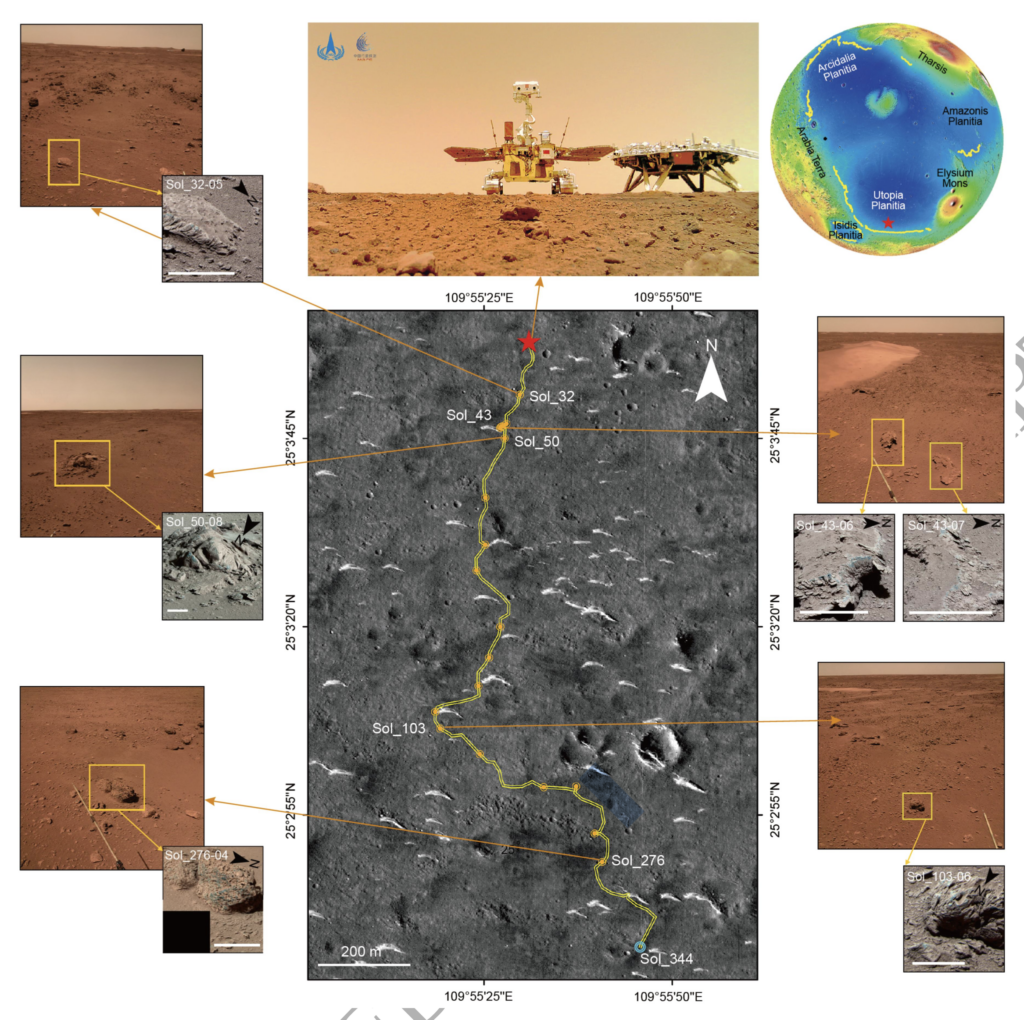Mars had ancient rivers and lakes. And oceans? There is some evidence for an ancient northern hemisphere ocean. Scientists have debated that evidence for decades.
However, Chinese and American experts think they have identified fresh evidence in marine sedimentary rocks in Utopia Planitia that may establish that ocean exists.
China’s Zhurong rover found sedimentary deposits. On May 21, 2023, Science China Press reported intriguing discoveries.
China University of Geosciences School of Earth Sciences Professor Long Xiao led the study team. National Science Review released its accepted peer-reviewed work on May 18, 2023. PDFs of the document are available.

Mars’s ancient ocean was found.
China’s Zhurong rover has begun investigating its landing location on Utopia Planitia’s southern edge in Mars’ northern hemisphere. Some experts believe the northern lowlands were an ocean floor. New rover discoveries support that notion. Zhurong detected sea sedimentary rocks using its multispectral camera (MSCam). This new data is in situ, unlike most other ocean theory data from orbiting spacecraft.
Mission scientists consider the Vasitas Borealis Formation (VBF) marine sedimentary rocks. The paper says:
Decades of research using remotely-sensed data have extracted evidence for the presence of an ocean in the northern lowlands of Mars in the Hesperian, but these claims have remained controversial due to the lack of in situ analysis of the associated geologic unit, the Vastitas Borealis Formation (VBF). The Tianwen-1/Zhurong rover was targeted to land within the VBF near its southern margin and has traversed almost 1.2 miles (2 km) southward toward the interpreted shoreline. We report here on the first in situ analysis of the VBF that reveals sedimentary structures and features in surface rocks that suggest that the VBF was deposited in a marine environment, providing direct support for the existence of an ancient (Hesperian) ocean on Mars.
Multispectral pictures indicate
Zhurong is traveling south toward an old shoreline. The rover has taken 106 panoramas. Mission scientists are investigating multispectral photos for rock composition and origin hints. Mars’ volcanic rock deposits have diverse bedding structures.

They differed from sand-blown rock formations.
Shallow seas
The photos showed bi-directional movement, suggesting low-energy tidal currents. They resemble shallow sea formations on Earth. The mission crew dubbed this area Zhurong Member. The rocks have minor channel structures, lens-shaped flaser bedding, and cross-bedding.
Paper says:
Bi-directional current orientations are characteristically formed by regular opposite directions of tidal currents in terrestrial shallow marine environments, and uncommonly in fluvial environments. Although aeolian deposits on Mars also contain some small-scale cross-laminations, the lack of larger structures indicative of aeolian environments supports the interpretation that these are of shallow marine origin.
Images indicated that cross-bedding layers overlap and tilt in opposing directions. Sand grains and stratum thickness vary. This suggests bidirectional water flow. Earth’s littoral-shallow seas have this.
Ancient Mars ocean shorelines and wild rivers
Penn State and Caltech researchers found evidence of a northern hemisphere beach on Mars last year.
The Perseverance rover discovered a rushing river last week. The deepest and fastest-flowing river ever seen by a rover or lander was now dry.
The Zhurong rover’s results confirm this and add another vital piece to the jigsaw. That ocean covered much of Mars’ northern hemisphere. Life support is the next question. Zhurong’s future explorations of this now-dry ocean wonderland will be intriguing.
Bottom line: China’s Zhurong rover identified sedimentary rocks from an ancient ocean on Mars. Using NASA data, they created topographical maps. The 3.5 billion-year-old Martian seashore stretches hundreds of thousands of square kilometers.
